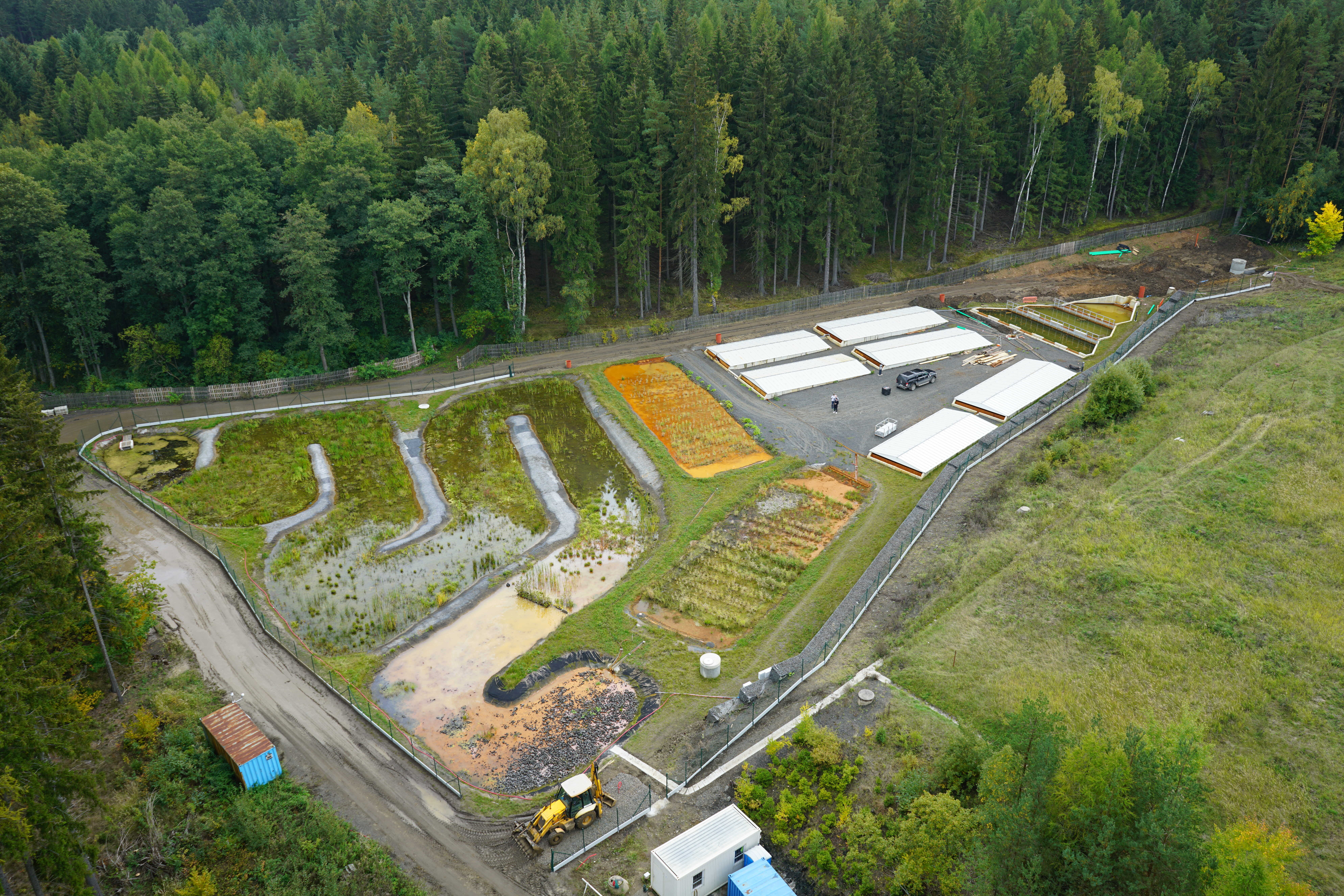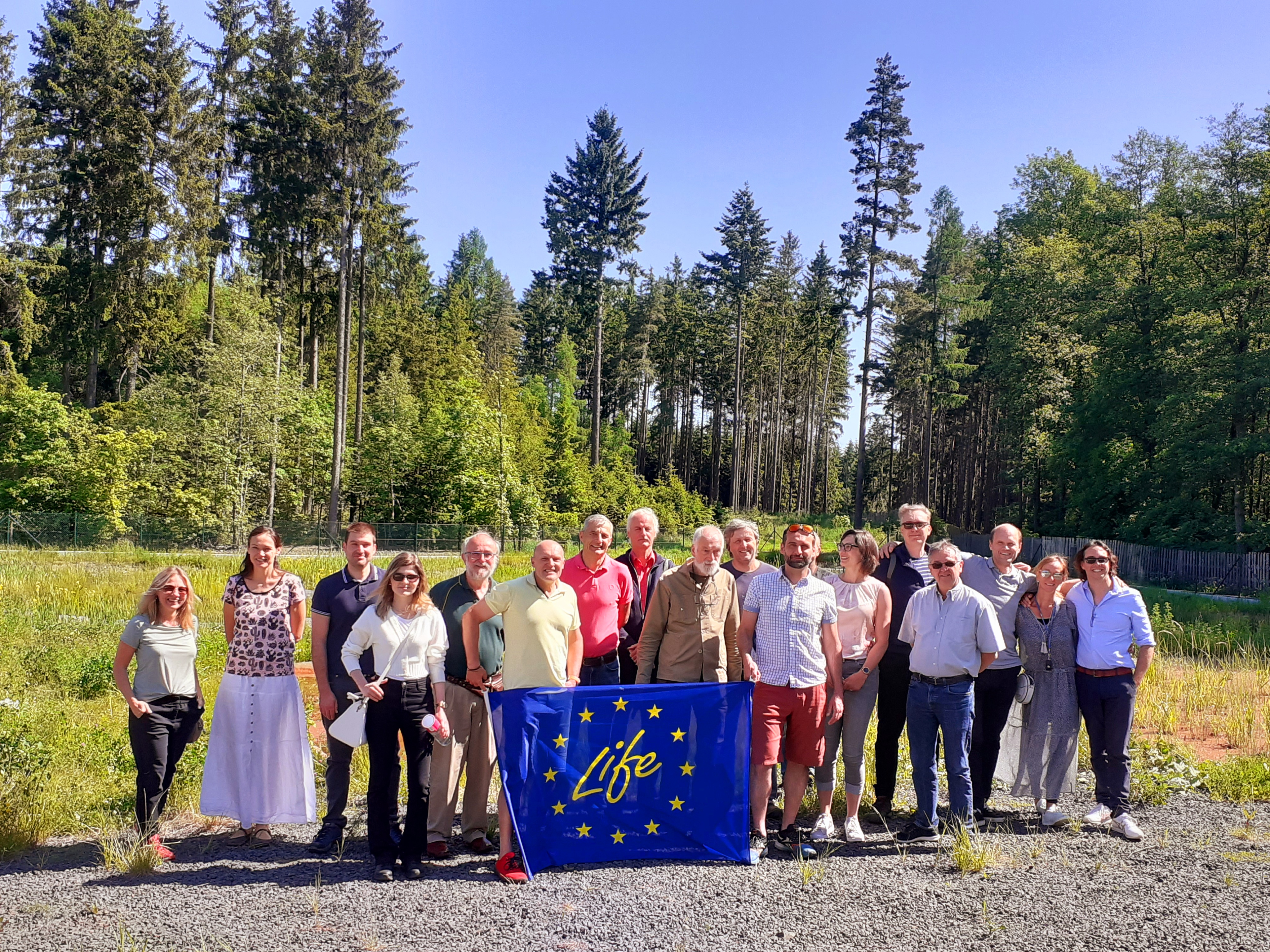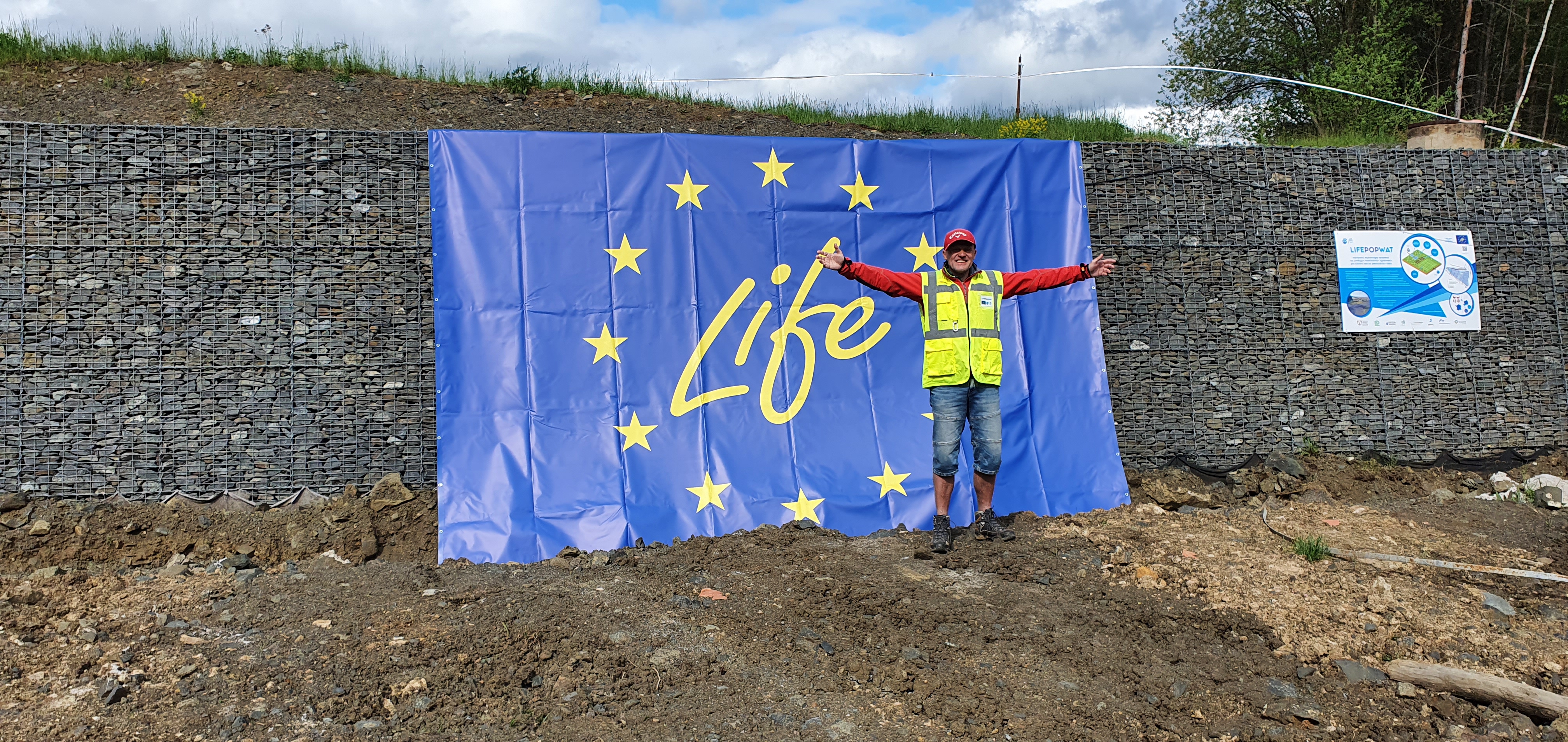LIFEPOPWAT wins LIFE Award for circular economy as first Czech project
10. 6. 2025
Since 1992, the LIFE Programme has been supporting the most daring environmental and climate projects across Europe. This year, the Institute for Nanomaterials, Advanced Technologies and Innovation at TUL shone on the LIFE Awards stage: the LIFEPOPWAT project took the top prize in the Circular Economy and Quality of Life category, becoming the first winning project in this category from the Czech Republic. Out of nearly 150 projects that were completed, the jury selected nine finalists in three categories, but only three of them received awards for truly breakthrough impact, innovation and transferability.
We talked about the project and the LIFE programme with the principal investigator Miroslav Černík and project and PR manager Pavla Švermová from CXI TUL.
How does the nomination and evaluation process for the LIFE Awards work? Do you apply or does someone nominate you?
The European Commission itself selected three finalists in each category based on its criteria. That is nine projects out of 150.

Did you know in advance that LIFEPOPWAT was among the finalists or was it a surprise?
A huge surprise. We didn't even know that our project was so good (laughs).
Of course, we knew that there would be an announcement this year and that we could be selected. We knew other projects that we had worked with, for example, and we knew that our project was good. After the nomination was announced, we just kept our fingers crossed. Everything was up to the European Commission.
What do you think was the most interesting aspect of the LIFEPOPWAT project for the jury?
After the award ceremony I talked to people from the commission. They said that for a long time they had wanted to award a project that provides a technical solution to clean water or air and to improve the environment in general. And our project fit right into that scheme and they thought it was the best. At least that's what two evaluators told me independently.

What is the project in a nutshell?
The project is based on the unique Wetland+ approach, which combines sorption systems, biodegradation and wetland treatment. This system is used to remove pesticides from wastewater coming from landfills. These substances would otherwise enter surface or groundwater. Such pesticides tend to accumulate in organisms, plants and animals and thus pose a potential threat to human health.
Where have you tested Wetland+?
The project tested two pilot sites: a large-scale operation in Hájek (CZ) and a field deployment in Jaworzno (PL). In both cases, it was a transferable model that took into account local conditions, i.e. contamination levels, hydrogeological conditions, microbial community composition and availability of natural sorbent materials.
At both sites, the pesticide water treatment efficiency was just below 100%. The target was not just one site, LIFEPOPWAT actively mapped other suitable sites to become the European standard for environmentally friendly pollution removal.
How big an environmental problem are pesticide landfills in Europe?
Pesticides were widely used in the 1960s, then found to have a negative impact on nature and humans. Pesticides were banned by the Stockholm Convention, but landfills remained because they are difficult to degrade. In addition, the production of the widely used pesticide HCH lindane, for example, produces many by-product compounds, also with negative potential, which are not such good pesticides. So about 85% of HCH production was stored or deposited without being used.
There are around 40 large landfills and countless smaller ones across Europe, estimated to contain up to 250 000 tonnes of pesticide substances.

And why are these landfills so little talked about?
It is probably the black nightmare of every country around the world, and it is a classic example of how things should not be done. The disposal of such a site is very expensive. This means that each state deals with it differently. Some just monitor it and some leave the solution to future generations. But there is no escaping this problem sooner or later.
Have you identified any other sites for deployment of the technology?
As part of the project, we have identified potential sites in Spain, Italy, Montenegro and Romania, for example. We have even presented the technology to the owners or responsible authorities around those sites. Negotiations are still ongoing in Spain. The problem, of course, is to find the money. This is despite the fact that our technology is much cheaper than conventional technologies. Unfortunately, this is a problem that is not burning them. Now.
What motivated and entertained you personally about this project?
I was motivated by the fact that we are able to purify water and have a tangible result of our work. We've done something that works and will work in the long term at that location. With other projects, we often end up with a trial or a half-bed and then it's up to someone else to put the technology into practice. Here, we made an application directly tailored to a pressing problem. And the solution is universally applicable.

The success rate of LIFE projects is on average around one third. What do you need to do to get a project?
At CXI TUL we have several experiences with LIFE projects. We have tackled this one, another is the LIFE4ZOO project, and this is the third time we have got it. Now we are trying to prepare another one.
If I overlook the technical details, the project has to have all the parts perfectly worked out. But first of all, you have to impress. You need to show that the project has a diverse scope and is applicable to a wide community. That's the initial step. The next step is also to get support from the Ministry of the Environment. LIFE has relatively little financial support, so the MoE funds selected projects. And the moment you get a project, then other problems are solved.
What other problems?
Technical and non-scientific problems. Many permits were needed, and even if we had something approved before the project, there were others.
DIAMO, the company we worked with on the project, faced up to this, and even at their own expense outside the project they did some measures that improved the technology.
And of course, the technical problems are also associated with the actual building of the technology on the site. Although it is a natural system, all the reservoirs need to be connected and a flow-through system needs to be created. And the whole system has to be fine-tuned and optimised.
Pavla, is there anyone you could have turned to for the administration of such a large project?
We had help from Mrs. Lucie Blažejová, who coordinates the LIFE programme at the Ministry of the Environment, and also from an external consultant, Mr. Daniel Svoboda, who monitors LIFE projects under the auspices of the European Commission. It also depends on the consortium of the LIFE project itself, we found our two experts on the subject, for us it was Paul Bardos (r3 Environmental Technology Ltd) and John Vijgen (Director of the International HCH & Pesticides Association).





.png)
.jpeg)
.png)
.jpeg)
.png)
.jpeg)
.png)


.png)